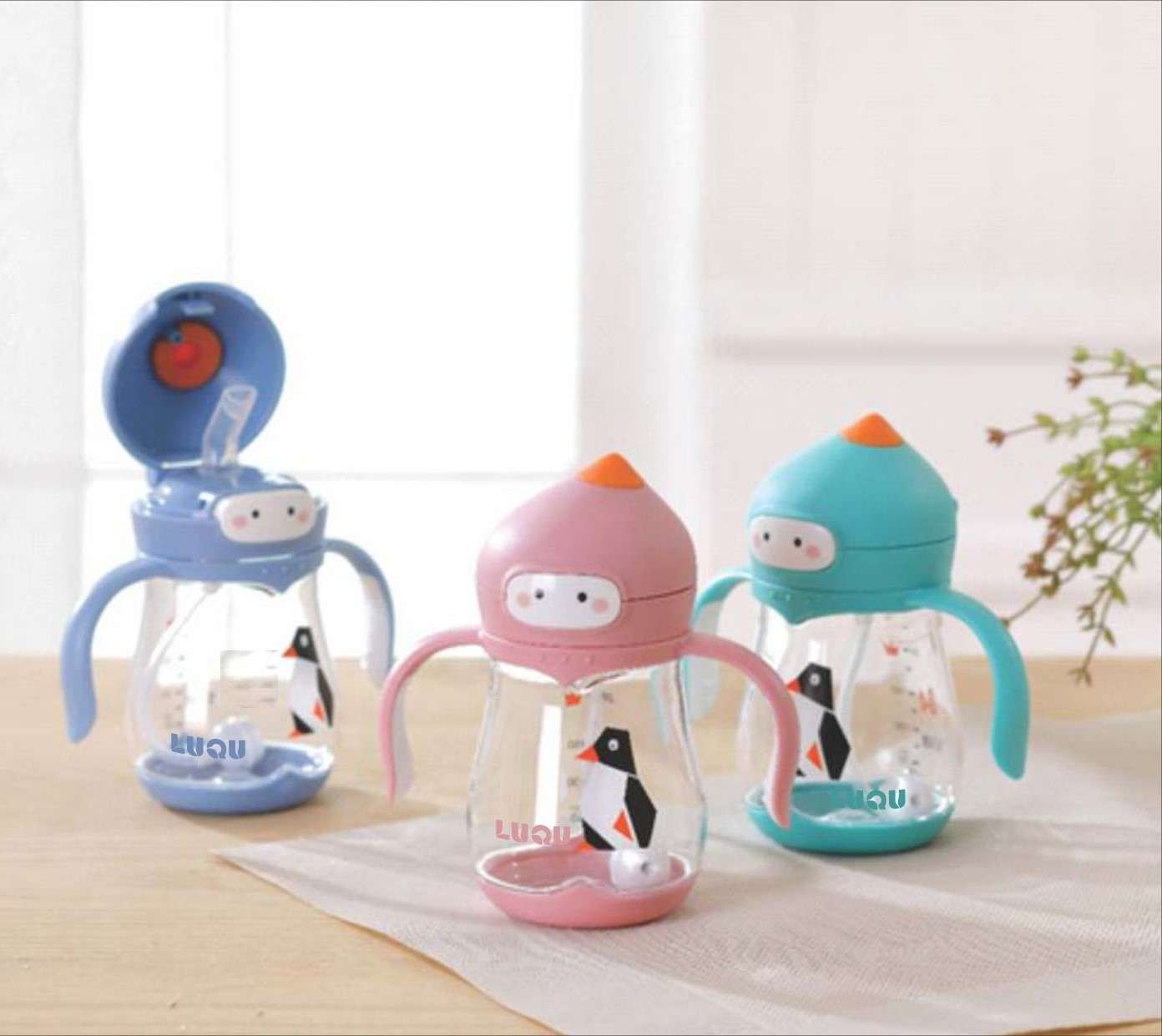Your baby’s first year will have millions of milestones and firsts. Whether lifting their head for the first time, rewarding them with precious baby giggles, or even taking a few tentative steps, it’s a whirlwind of emotions and unmissable moments.
Another milestone that should happen within the first year is transitioning your baby from a bottle to a cup. Babies can form strong attachments to their bottles, and as tempting as it may be to continue letting them use it for comfort, it’ll only make life harder in the long run.
There’s no need to worry, though, because we’ve put together this guide to help you transition your baby from bottle to cup as smoothly as possible.

When to start transitioning from a bottle to a sippy cup
Babies can start drinking water from six months old with their first meals.
So this means you can slowly start to wean them off the bottle anywhere between six and 12 months.
If you’re planning on starting the transition as early as possible from six months, you’ll first need to make sure that they can sit and hold their heads steady by themselves.
Otherwise, it’ll be too dangerous to start introducing the cup.
Ideally, when your child is one year old, they should be completely weaned off the bottle and using a sippy cup for every drink, though every child tends to make this transition at their own pace.
Reasons to transition from a bottle
Bottles are easy to use. And there’s very little mess. So why do we need to introduce the sippy cup as early as six months? Well, prolonged bottle use, as in children who continue to use the bottle long after their first birthday, can lead to some health issues, such as:
- Risk for tooth decay.
- Misaligned teeth.
- Risk of developing an overbite.
- Ear infections if drinking from a bottle while lying down.
- Delays in speech development.
- Unhealthy snacking behavior if they rely on the bottle rather than food too much.
- It’s important to be aware of the risks of prolonged bottle use, so you can fully understand why children need to move up to a cup.
The best sippy cups to choose
Sippy cups are a fantastic training tool for babies and toddlers before they learn how to use an open cup. There are many different types of sippy cups out there, so you’ll need to choose the one you think will benefit your child the most.
Sippy cups with two handles will make it much easier for tiny hands to hold as they continue to learn. Our range of training cups features sippy cups with removable handles and with interchangeable nipple and spout options, so your child can use the same cup to transition through their drinking development. Game changer!
You can also choose a Sippy cup with either a straw or a spout. Both are perfectly fine for your child to use; it’s simply a matter of which one works best for them. Some prefer Sippy cups with a straw, like the ones in our LUQU range, as it builds up the muscles in their mouth and cheeks, which can help them when it comes to learning their first words.
For your first time transitioning a child from the bottle to the cup, the spout may be easier, and you can then move on to a straw before taking the big leap to an open cup.

How to transition from bottle to sippy cup
We’ll warn you now: moving on from the bottle to the cup won’t be easy. There will be a lot of trial and error involved, along with a lot of patience. But, once you successfully make the switch, you’ll never look back. Below are our top tips on how to make the transition easier for you and for baby.
1. Start early
Introducing your child early to the sippy cup will help them develop skills and habits sooner – meaning fewer tantrums during the transition. When your child starts eating solid foods, use the sippy cup by tipping the spout to their mouth. While they won’t drink enough for their needs, they will start to learn and get used to how the cup should work.
2. Let them copy you
At mealtimes, let your child sit in a highchair next to you and watch as you eat and drink from a glass. Children learn a lot by copying their parents, so don’t be surprised if they mimic your actions and try drinking from their sippy cup in the same way.
3. Use a silicone spout
Sippy cups with a silicone spout, rather than hard plastic, will feel similar to a bottle and help make the transition easier for them. It’s also much safer and gentler on their teeth and mouths.
4. Introduce water slowly
Transitioning from a bottle to a cup also means introducing water, when all your baby knows is formula or breastmilk. This is another big change that your baby might be a little resistant to. We’d recommend trying out water with meals at first and moving into this transition very slowly, though you can always place formula or breastmilk in a sippy cup as well to ease the transition to cup!
5. Introduce drinks other than water
Let’s face it; water is boring – especially for babies. While it’s super important for their health and hydration, the flavorless drink won’t excite them. If your baby is at least 12 months old, try switching it up and giving them a small amount of fruit juice they’ll enjoy drinking. Or, simply rub some of the juice on the spout to give it an irresistible flavor. Your child will more than likely be interested enough to try sipping more.
6. Make it fun
Children need fun or an incentive to make them do something they don’t want to do. Why would they drink from a sippy cup when their favorite bottle is there and comfortable to use? Let your toddler choose a sippy cup of their own, in their favorite color or with a character they love.
7. Remove all old bottles
If your child sees their old bottle is still lying around, empty and waiting to be filled with milk, they may not be interested in using their new cup. So, either hide or get rid of all of the old bottles at once and make the transition to sippy cups instantaneous. There may be some stress and initial pushback, but persevering and giving them tough love may help the transition quicker.
8. Reduce nighttime bottle usage
Did you know that nighttime feeds can be the most damaging to your child’s teeth? If you’ve replaced the bottle with the sippy cup during the day, but they’re still expecting their bottle at night, you’ll need to start weaning them off night feeds completely. Not only will it protect their teeth, but it’ll also help to move them onto the ‘big kid’ feeding schedule. Create some time between the final feeding and bedtime, or give them their final feed in another room to stop the association between bed and food.
9. Give them plenty of calcium-rich snacks
With the move from bottle to cup reducing their milk intake, you may start to worry about whether your child is getting enough calcium. So, make sure to give them enough calcium-rich snacks during the day, such as cheese, yogurt, or oatmeal, to prevent the risk of a calcium deficiency.
10. Follow through
Most important of all, don’t give in. When your child is asking for their bottle (because trust us, they will), stay strong and don’t revert back once you’ve made a firm transition. Children learn quickly, and if you give in during a temper tantrum, they’ll do it again and again. Following through with new rules and transitions will be a big part of your parenting journey, so the earlier you can get used to it, the better. As with all things, this phase will pass!












